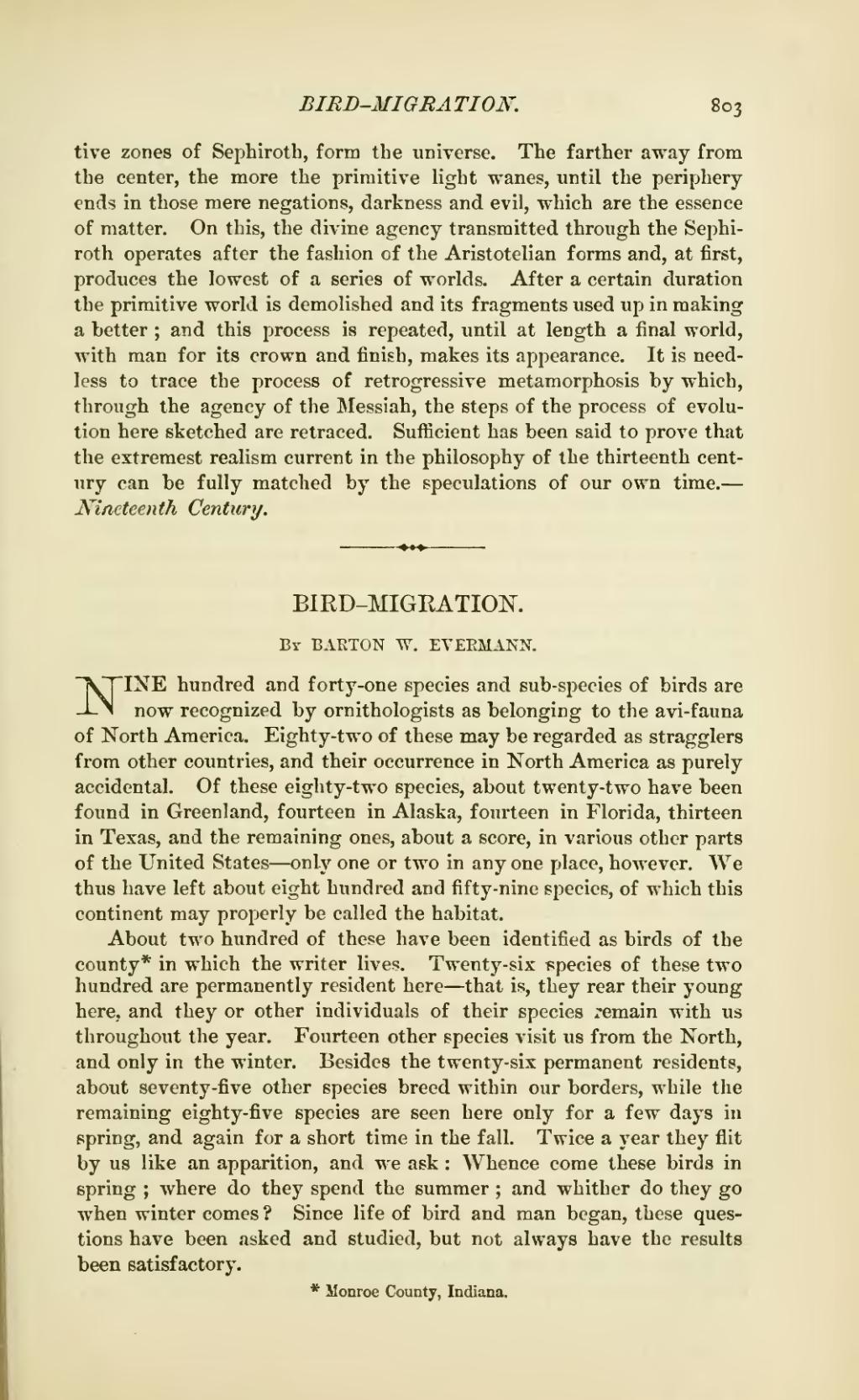tive zones of Sephiroth, form the universe. The farther away from the center, the more the primitive light wanes, until the periphery ends in those mere negations, darkness and evil, which are the essence of matter. On this, the divine agency transmitted through the Sephiroth operates after the fashion of the Aristotelian forms and, at first, produces the lowest of a series of worlds. After a certain duration the primitive world is demolished and its fragments used up in making a better; and this process is repeated, until at length a final world, with man for its crown and finish, makes its appearance. It is needless to trace the process of retrogressive metamorphosis by which, through the agency of the Messiah, the steps of the process of evolution here sketched are retraced. Sufficient has been said to prove that the extremest realism current in the philosophy of the thirteenth century can be fully matched by the speculations of our own time.—Nineteenth Century.
| BIRD-MIGRATION. |
By BARTON W. EVERMANN.
NINE hundred and forty-one species and sub-species of birds are now recognized by ornithologists as belonging to the avi-fauna of North America. Eighty-two of these may be regarded as stragglers from other countries, and their occurrence in North America as purely accidental. Of these eighty-two species, about twenty-two have been found in Greenland, fourteen in Alaska, fourteen in Florida, thirteen in Texas, and the remaining ones, about a score, in various other parts of the United States—only one or two in anyone place, however. We thus have left about eight hundred and fifty-nine species, of which this continent may properly be called the habitat.
About two hundred of these have been identified as birds of the county[1] in which the writer lives. Twenty-six species of these two hundred are permanently resident here—that is, they rear their young here, and they or other individuals of their species remain with us throughout the year. Fourteen other species visit us from the North, and only in the winter. Besides the twenty-six permanent residents, about seventy-five other species breed within our borders, while the remaining eighty-five species are seen here only for a few days in spring, and again for a short time in the fall. Twice a year they flit by us like an apparition, and we ask: Whence come these birds in spring; where do they spend the summer; and whither do they go when winter comes? Since life of bird and man began, these questions have been asked and studied, but not always have the results been satisfactory.
- ↑ Monroe County, Indiana.

